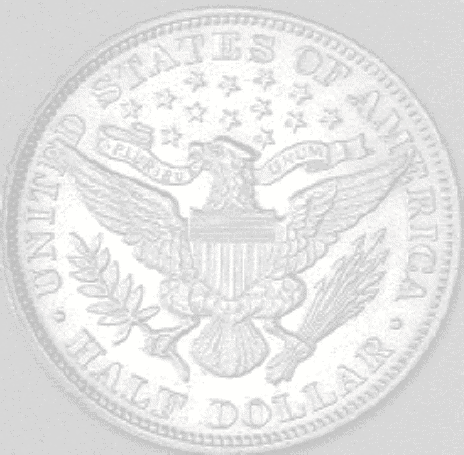
|
|
||
|
|
|
|
|
|
||

-6-
FOR BETTER OR WORSE:
CHAPTER TWO:
AN ECONOMIC HISTORY OF THE CIVIL WAR: THE CONFEDERACY (1861-1865)
Text: “Thou shalt have a perfect and just weight, a perfect and just measure shalt thou have: that thy days may be lengthened in the Land which the Lord thy God giveth thee.” (Deuteronomy 25:15)
Economics may have played a more significant role in
deciding the outcome of the War Between the States than the battles
fought. Although 962,633 half dollars were minted with a pre-war design
(“Economic Role Significant in Civil War”) few people are aware that due
to the lack of coining metals at the outbreak of the War, the
Confederacy minted only 16 coins bearing the Confederate design --4 half
dollars and 12 cents. The cents were struck by George Lovett of New
York, who, fearing prosecution, hid in his cellar both the cents and the
dies used to strike them. The 4 half dollars were struck at the New
Orleans mint after it was seized by the Confederacy in January 1861,
just 5 days after Louisiana seceded from the Union.
Fiat Money
At the outbreak of the War, the Confederacy had no treasury; and when it was first established it lacked sufficient money to pay for its Secretary's writing desk. An estimated 85,000,000 "dollars" in bank notes was in circulation, but the banks themselves were fraudulent because they were operating without gold and silver reserves, and their fiat "money" was eyed with increasing suspicion.
"Fatal Instruments"
In an attempt to solve her economic woes, the Confederacy resolved to issue its own paper "money." Christopher Gustavus Memminger, Secretary of the Treasury, perceived the dangers of paper "money", but he turned to it for economic salvation. In 1861, the National Bank Note Company of New York printed 8,000,000 "dollars" in currency. The notes were to be smuggled through the Union blockade and issued in Montgomery, Alabama. Much of the paper, however, was seized, and the Confederacy was obliged to obtain bank note paper and lithographic materials from England. The first shipment was seized upon the open seas and in the words of Horace White, "It would have been better for the Confederacy if all other efforts to obtain these fatal instruments had likewise failed." (White, 166)
A second issue of currency was printed in Richmond, Virginia the same year. Then followed a third issue, and then a fourth. The last issue alone totaled 150,000,000 "dollars."
Redemption Suspended
On account of inadequate specie
reserves (i.e. gold and silver) the redemption of paper "money" was
suspended. According to the Richmond Enquirer of December 1861,
runners were traversing the country "buying up" gold and silver at a "30
to 50 percent premium." The people did not want to be left holding
currency that was intrinsically of no value and were exchanging it for
that which is precious by God's ordination.
In the following year, three issues of currency
appeared. A total of 165,000,000 "dollars" was printed in the first
issuance alone. When Southerners balked at accepting the paper "money"
at its purported value, a Legal Tender Act was passed in an attempt to
force them to accept it as payment. Its effect was minimal. The names of
people who refused to accept the paper was publicly posted, and still
the people refused to accept the paper. When people must be goaded into
accepting a currency, it is a sure sign they do not believe it to be any
good. God commanded, "Thou shalt have a perfect and just weight, a
perfect and just measure shalt thou have."
